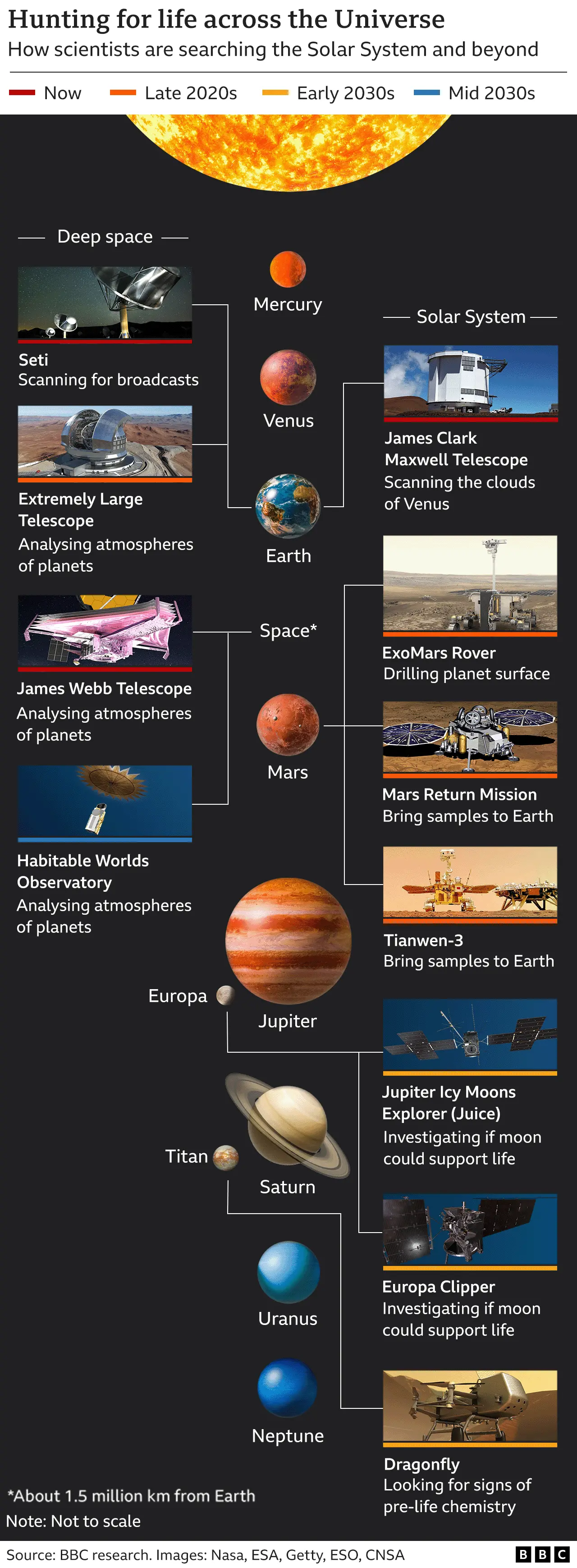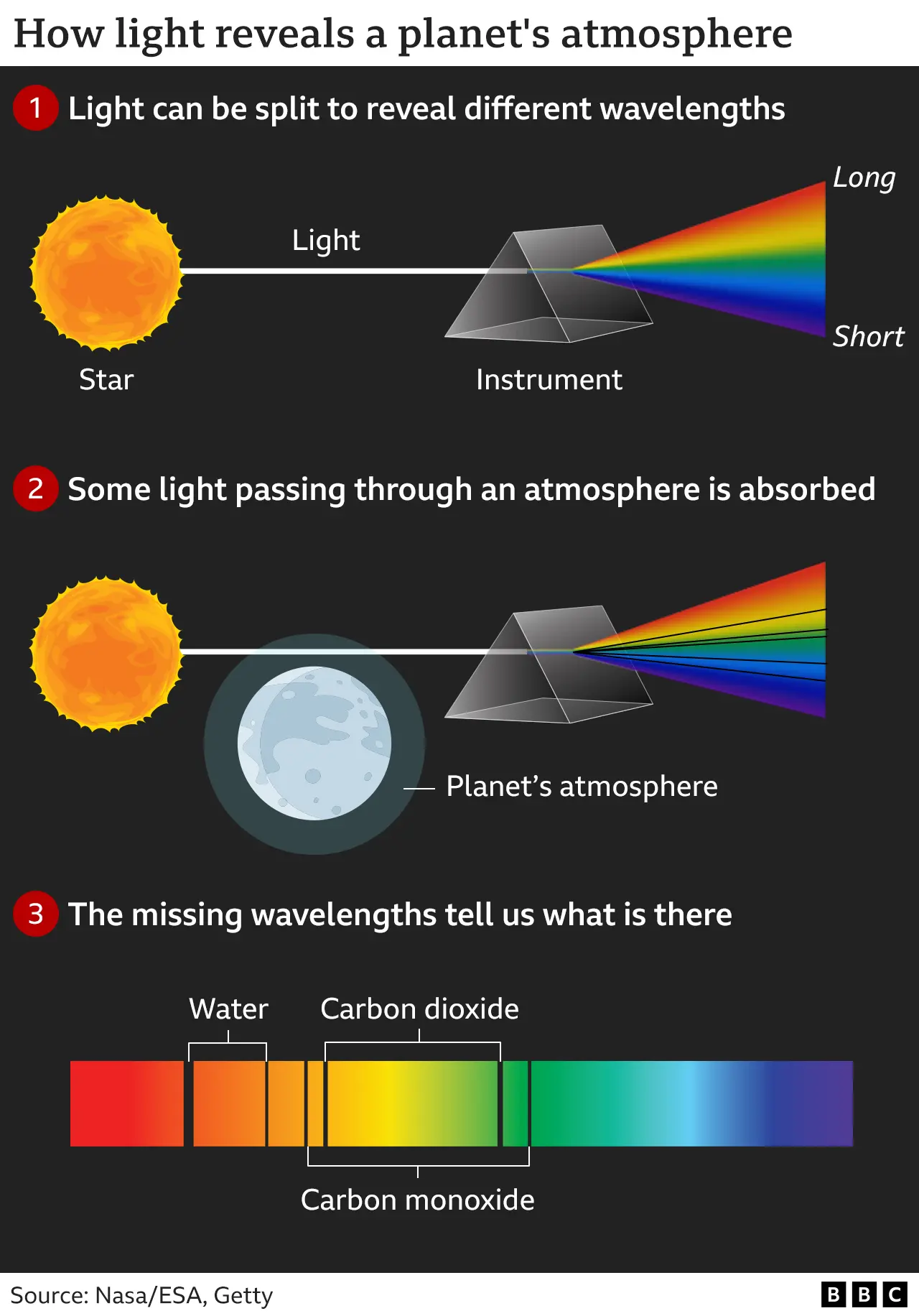The quest to find alien life has reached an unprecedented stage. Scientists no longer question if extraterrestrial life exists; instead, they ask when it will be discovered. Advances in technology and ongoing missions have astronomers optimistic about detecting signs of life within our lifetimes—potentially in the next few years.
NASA’s James Webb Space Telescope (JWST) recently identified possible signs of life on planet K2-18b, 120 light-years away. Located in the “Goldilocks zone,” this planet has conditions suitable for liquid water, essential for life. Early findings hint at the presence of dimethyl sulfide, a gas on Earth produced by marine organisms. While confirmation will take another year, the implications of such a discovery could transform humanity’s understanding of life in the universe.

JWST’s capabilities are groundbreaking but limited to larger planets like K2-18b. To explore smaller, Earth-like planets, NASA is planning the Habitable Worlds Observatory (HWO) for the 2030s, designed to analyze atmospheres of worlds near their stars. Similarly, the European Southern Observatory’s Extremely Large Telescope (ELT), set to operate later this decade, will focus on studying planetary atmospheres with unmatched precision.
Closer to Earth, icy moons such as Europa and Titan offer promising habitats. NASA’s Europa Clipper and ESA’s Juice missions, arriving in the early 2030s, will investigate Europa’s subsurface ocean, believed to harbor life-supporting conditions. Meanwhile, NASA’s Dragonfly mission will explore Titan, a moon of Saturn with carbon-rich chemicals and potential for prebiotic chemistry.
Mars remains a target as well, with NASA’s Perseverance rover collecting samples from ancient river deltas. These samples may reveal microfossils, evidence of past life, and will be brought to Earth in the 2030s for detailed analysis.

Alien Signals and Humanity’s Place
Beyond physical exploration, the Search for Extraterrestrial Intelligence (SETI) is modernizing its approach. With improved telescopes, SETI focuses its efforts on likely alien habitats identified by missions like JWST. Researchers are not only listening for radio waves but also scanning for laser pulses—potential signs of advanced civilizations.
If evidence of alien life emerges, the impact will be revolutionary, reshaping humanity’s understanding of itself and its place in the cosmos. As Dr. Subhajit Sarker of Cardiff University notes, such a discovery will transcend science, prompting profound cultural and philosophical changes.















No comments